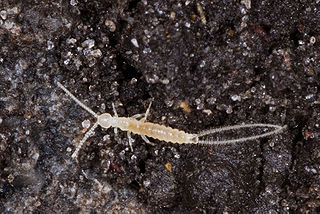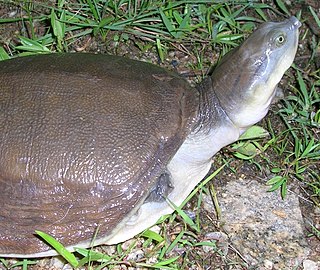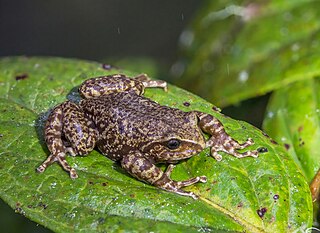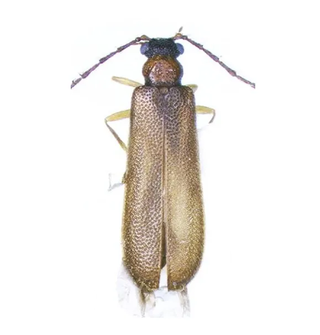
The acouchis are rodents belonging to the family Dasyproctidae from the Amazon basin. They are generally smaller than agoutis and have very short tails, while agoutis lack tails. For this reason the acouchis are also called tailed agoutis.

The pink cockatoo, also known as the Major Mitchell's cockatoo or the Leadbeater's cockatoo, is a medium-sized cockatoo that inhabits arid and semi-arid inland areas of Australia, though it is seen regularly in other climates, for example, South-East Queensland's subtropical region.
In biology a section is a taxonomic rank that is applied differently in botany and zoology.

Bar-Ilan University is a public research university in the Tel Aviv District city of Ramat Gan, Israel. Established in 1955, Bar Ilan is Israel's second-largest academic institution. It has about 20,000 students and 1,350 faculty members.

Heosemys is a genus of freshwater turtles in the family Geoemydidae. The genus Heosemys was split out of the related genus Geoemyda by McDowell in 1964.

Campodea is a genus of small, white, bristle-tailed arthropods in the order Diplura. The best known species, Campodea staphylinus, has a wide distribution across much of Europe. It lives in damp places under stones, fallen trees, or in rotten wood and leaves. Although blind, it immediately crawls away on exposure to the light into the nearest crevice or other sheltered spot, feeling the way with its antennae. There are at least 130 described species in Campodea.

Lissemys is a genus of softshell turtles in the subfamily Cyclanorbinae of the family Trionychidae. The genus is indigenous to southern Asia.

Gracillariidae is an important family of insects in the order Lepidoptera and the principal family of leaf miners that includes several economic, horticultural or recently invasive pest species such as the horse-chestnut leaf miner, Cameraria ohridella.

The Batrachedridae are a small family of tiny moths. These are small, slender moths which rest with their wings wrapped tightly around their bodies.

Elseya is a genus of large side-necked turtles, commonly known as Australian snapping turtles, in the family Chelidae. Species in the genus Elseya are found in river systems in northern and northeastern Australia and throughout the river systems of New Guinea. They are identified by the presence of alveolar ridges on the triturating surfaces of the mouth and the presence of a complex bridge strut.
Fauna Europaea is a database of the scientific names and distribution of all living multicellular European land and fresh-water animals. It serves as a standard taxonomic source for animal taxonomy within the Pan-European Species directories Infrastructure (PESI). As of June 2020, Fauna Europaea reported that their database contained 235,708 taxon names and 173,654 species names.

Chelis is a genus of tiger moths in the family Erebidae. There are more than 30 described species in Chelis, found in the holarctic.
The Ixtlán deer mouse is a species of rodent in the family Cricetidae.
The wildlife of Sri Lanka includes its flora and fauna and their natural habitats. Sri Lanka has one of the highest rates of biological endemism.

Pristimantis is a very large genus of frogs distributed in the southern Caribbean islands and in Central and South America from Honduras to northern Argentina and southern Brazil. With 596 described species, the genus had more species than any other genus of vertebrate animals. Many of these species genus are endemic to the Northwestern Andean montane forests ecoregion in north-western South America.

Hyperoodon is a genus of beaked whale, containing just two species: the Northern and Southern bottlenose whales. While not in the genus Hyperoodon, Longman's beaked whales are alternatively called tropical bottlenose whales due to their physical features resembling those of bottlenose whales.
The Australian Faunal Directory (AFD) is an online catalogue of taxonomic and biological information on all animal species known to occur within Australia. It is a program of the Department of Climate Change, Energy, the Environment and Water of the Government of Australia. By May 12, 2021, the Australian Faunal Directory has collected information about 126,442 species and subspecies. It includes the data from the discontinued Zoological Catalogue of Australia and is regularly updated. Started in the 1980s, it set a goal to compile a "list of all Australian fauna including terrestrial vertebrates, ants and marine fauna" and create an "Australian biotaxonomic information system". This important electronic key and educative package enables faster and orderly identification of Australian centipede species.

Turfanodon is an extinct genus of dicynodont therapsid from the Late Permian Sunan, Guodikeng, and Naobaogou Formations of China. The holotype of T. bogdaensis was discovered between 1963-1964 and was originally named in 1973 by A. Sun with the type species Turfanodon bogdaensis, Turfanodon was reclassified as a junior synonym of the related Dicynodon in 1988 by G. M. King. T. bogdaensis remained a species of Dicynodon for over two decades before the genus was reinstated in 2011 in a revision of the taxonomy of Dicynodon by palaeontologist Christian Kammerer. A second species from Inner Mongolia, T. jiufengensis, was named in 2021 by palaeontologist Jun Liu from a nearly complete skeleton and other referred bones. Turfanodon was a relatively large dicynodont, and similar in appearance to the related Daptocephalus from South Africa.

The laughingthrushes are a family, Leiothrichidae, of Old World passerine birds. They are diverse in size and coloration. These are birds of tropical areas, with the greatest variety in Southeast Asia and the Indian subcontinent. The entire family used to be included in the Old World babbler family Timaliidae.

Binburrum articuno is a species of beetle which in the taxonomy field is classified under the genus Binburrum. It exists only in Australia. It is named after the fictional creature known as Articuno from the pop culture franchise Pokémon. It was named alongside other beetles from the same genus, Binburrum zapdos and Binburrum moltres, by Darren Pollock and Yun Hsiao. Because their names are based on a very popular franchise, these species saw above average media coverage upon being named.














